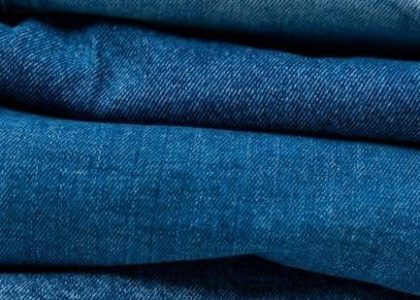
Schilke mouthpieces, renowned for quality and consistency, are favored by professionals and students alike. Renold Schilke’s designs have significantly impacted brass pedagogy. They offer a wide range of models for trumpet, cornet, flugelhorn, trombone, euphonium, and tuba, including custom options, setting a high standard in the industry.
Schilke’s Standard Series Labeling System
The Schilke Standard Series employs a straightforward labeling system for its mouthpieces. When a mouthpiece features a standard backbore, rim, and cup, the model number is primarily designated by the cup diameter, represented by the first number on the mouthpiece. For instance, a model 14 trumpet mouthpiece, which has a standard C cup, is identified solely by the number 14. This simplifies the selection process when standard features are desired. This numbering system is very useful for players who understand the standard series. It allows for easy identification and comparison between different models. The simplicity of the labeling system reflects Schilke’s commitment to clarity and user-friendliness. However, it’s important to note that this system applies only when all other parameters like backbore, rim, and cup are standard. Variations in these features lead to additional characters in the model designation. These additional characters denote specific alterations from the standard design. This system ensures that players can quickly identify the basic characteristics of a mouthpiece.
Understanding Cup Diameter Designations
In the Schilke mouthpiece system, the cup diameter, indicated by the initial number in the model designation, plays a crucial role in the playing characteristics. It is important to note that while the initial number primarily represents the diameter, the actual measurement can vary slightly depending on the cup depth. For example, mouthpieces with shallower cups, like the A cups, tend to have slightly wider diameters than those with deeper cups, such as the C cups, even if they share the same initial number. The variation is not much but it makes a difference in feel and playability. These subtle differences are intentional, aiming to fine-tune the playing experience based on the cup depth. A larger diameter generally provides a bigger, fuller sound, while a smaller diameter can offer greater flexibility and control. Understanding this nuance helps players select a mouthpiece that best matches their playing style and desired tone. It’s not just about the number itself but how that diameter interacts with the cup depth and other design features.
Schilke Mouthpiece Materials and Construction
Schilke mouthpieces are crafted with meticulous attention to detail, utilizing high-quality brass as the primary material. The choice of brass is critical, as it influences the mouthpiece’s tonal characteristics and overall response. The precision in manufacturing is evident in the consistency and accuracy of each mouthpiece. Schilke’s construction process ensures a smooth, even finish, which contributes to playing comfort and accuracy. The mouthpieces are machined to very tight tolerances, guaranteeing that every mouthpiece of a specific model will perform consistently. This level of precision is why Schilke mouthpieces are known for their reliability and predictable performance. The carefully selected brass alloy and the precise machining processes used by Schilke result in mouthpieces that are not only durable but also provide an optimal playing experience. This attention to materials and construction is a core element of Schilke’s reputation for excellence.
Overview of Schilke Trumpet Mouthpiece Models
Schilke offers a diverse range of trumpet mouthpieces, each designed to cater to different playing styles and preferences. The models vary significantly in cup diameter, cup depth, rim contour, and backbore, allowing players to find the perfect fit for their individual needs. For instance, models with shallower A cups and tight backbores, often designated with an “A4a” suffix, are optimized for high register playing and lead work, providing a brighter tone with more resistance. Conversely, models with deeper C or D cups offer a fuller, more mellow sound, suitable for orchestral or solo playing. The rim contours range from rounded to semi-flat, influencing comfort and endurance. Some models feature additional mass for a darker sound. Schilke also produces artist models, developed in collaboration with renowned players, reflecting their specific preferences. This extensive selection ensures that both students and professionals can find a Schilke mouthpiece that enhances their performance.
Schilke Cornet and Flugelhorn Mouthpieces
While Schilke is widely recognized for its trumpet mouthpieces, their offerings for cornet and flugelhorn are equally noteworthy, though perhaps less extensively detailed in readily available information. Schilke’s cornet mouthpieces often feature a larger, more conical cup design compared to trumpet mouthpieces, contributing to the warmer, more mellow tone characteristic of the cornet. These mouthpieces are typically designed to provide a full, rich sound, while still maintaining clarity and responsiveness. Similarly, Schilke’s flugelhorn mouthpieces are designed to produce a dark, velvety tone with excellent projection. Flugelhorn mouthpieces will typically have a deeper funnel-shaped cup, which aids in creating its distinct sound. The rim contours and backbore options for both cornet and flugelhorn are varied to suit individual players. Although the specific models and their detailed specifications are less readily available, Schilke’s commitment to quality ensures these mouthpieces provide optimal performance for players of all levels.
Schilke Trombone and Euphonium Mouthpieces
Schilke’s trombone and euphonium mouthpieces, while not as extensively documented as their trumpet counterparts, maintain the brand’s reputation for quality and precision. Trombone mouthpieces from Schilke are designed with various cup depths and rim shapes to accommodate different playing styles and preferences. Options range from shallower cups for a brighter, more responsive sound, to deeper cups for a darker, fuller tone. These mouthpieces aim to provide a balance of clarity and power, catering to both orchestral and solo players. Euphonium mouthpieces by Schilke are typically designed with a larger diameter and a deeper, more funnel-shaped cup, which contributes to the instrument’s characteristic rich and mellow sound. They often feature a more rounded rim contour, enhancing player comfort and flexibility. The Schilke approach to trombone and euphonium mouthpieces emphasizes consistency and reliability, allowing players to achieve a refined and nuanced sound.
Schilke Tuba Mouthpieces
Schilke’s tuba mouthpieces are designed with the specific needs of tuba players in mind, focusing on producing a full, resonant, and controlled sound. These mouthpieces typically feature large diameters and deep, funnel-shaped cups, which are essential for the tuba’s low register. The cup depth is carefully engineered to promote a rich and powerful tone, while also providing the necessary flexibility for various playing situations. Schilke tuba mouthpieces are available in different rim shapes and widths, allowing players to find a comfortable fit that enhances their endurance and control. The backbores are designed to provide optimal resistance, enabling players to maintain a consistent and focused sound across the dynamic range. Whether for orchestral, solo, or ensemble playing, Schilke tuba mouthpieces are crafted to meet the demands of the instrument, ensuring a quality and consistent playing experience. The brand’s commitment to precision and quality is evident in their tuba mouthpiece designs.

Comparing Schilke to Bach Mouthpieces
When comparing Schilke and Bach mouthpieces, several factors come into play, including rim contour, cup depth, and backbore design. Both brands are highly respected and widely used, but they cater to different player preferences. Schilke mouthpieces are known for their precision and consistency, often featuring a more modern and focused sound. They offer a wide array of models, including specialized designs for high-register playing and unique backbore options. Bach mouthpieces, on the other hand, have a more traditional feel and are known for producing a broad, rich tone. Bach models tend to have a slightly different rim contour and cup depth, which many players find comfortable and versatile. While both brands offer excellent quality, the choice between Schilke and Bach often boils down to individual preferences in terms of desired tonal characteristics, response, and playing feel. Some players find Schilke’s more focused sound ideal for contemporary music, while others prefer the warmth and depth of Bach for orchestral work. It is essential to experiment with both brands to find the perfect fit for your unique playing style.
Schilke Rim Contours and Their Effects
Schilke mouthpieces feature a variety of rim contours, each designed to impact the player’s comfort, endurance, and overall playing experience. The rim is the part of the mouthpiece that makes contact with the player’s lips, and its shape significantly influences how the mouthpiece feels and responds. Schilke offers rims ranging from rounded to semi-flat, each with its own characteristics. A rounded rim often provides greater flexibility, allowing for easier pitch bending and a more fluid playing style. This type of rim can be particularly beneficial for players who prefer a more responsive feel. On the other hand, semi-flat rims, like the popular “4” rim, offer a more cushioned feel which can improve endurance, especially during long practice sessions or performances. The semi-flat design provides a broader contact area, distributing pressure more evenly across the lips. Some players find this rim shape gives greater stability and control. Schilke’s rim variations are designed to cater to different player preferences, allowing for a customized playing experience based on individual needs and playing style. It is crucial to understand the effect of rim contour to find the mouthpiece that best suits your embouchure and playing goals.
Schilke Cup Depths and Their Impacts
Schilke mouthpieces offer a range of cup depths, each influencing tone, response, and playing range. Cup depth refers to the distance from the rim’s edge to the start of the throat, a critical factor in mouthpiece performance. Shallower cups, often designated with an “A,” generally provide greater resistance, which can aid in the upper register, making high notes more accessible and creating a brighter, more brilliant tone. These cups are ideal for lead playing and high-register work, offering a quick response and enhanced projection. Medium-shallow cups, like those designated with a “B,” offer a balance between high-register assistance and a fuller tone, suitable for players seeking versatility. Deeper cups, frequently marked with a “C” or “D,” generally produce a warmer, darker tone with a greater focus on the lower register, providing a more flexible sound, ideal for orchestral and solo work. The depth of the cup impacts how the air flows through the mouthpiece, influencing the timbre and projection. Choosing the correct cup depth is essential for achieving the desired sound and response, requiring careful consideration of the player’s specific needs and musical style.
Schilke Backbore Variations and Their Influence

Schilke backbore variations significantly impact a mouthpiece’s playing characteristics, influencing resistance, tone, and overall feel. The backbore is the internal bore of the mouthpiece shank, and its shape and dimensions play a crucial role in the instrument’s response. A tighter, more restrictive backbore, often designated as “a” or “Z”, generally provides more resistance, which can be beneficial for players focusing on the upper register, creating a brighter, more focused sound with enhanced projection. These backbores are often favored for lead trumpet playing where a clear, penetrating tone is desired. Standard backbores, typically designated as “c,” offer a balance between resistance and openness, providing a versatile response suitable for various playing styles. They allow for a full, resonant tone with good flexibility across the registers. More open backbores, like the “x” and “d” variations, typically offer less resistance, facilitating a freer blowing experience with a bigger, more open sound, preferred by players seeking a broad, symphonic tone. The backbore’s interaction with the cup and rim determines how efficiently air flows through the mouthpiece, impacting articulation, tone color and dynamic range. Selecting the appropriate backbore is important in fine-tuning a player’s sound and performance.

Custom Schilke Mouthpiece Options
Schilke is renowned for its exceptional custom mouthpiece services, catering to the unique needs of individual players. Recognizing that no two musicians are exactly alike, Schilke offers a personalized approach to mouthpiece design, allowing for the creation of mouthpieces that perfectly complement an individual’s embouchure, playing style, and instrument. Customization options encompass a wide range of parameters, including cup diameter, depth, and shape, rim contour and width, throat size, and backbore design. Players can work directly with Schilke’s experienced craftsmen, who utilize their extensive knowledge and expertise to create mouthpieces that are tailored to specific performance requirements, such as enhanced high register, improved endurance, or a specific tonal quality. The custom process often involves a consultation to assess the player’s needs, followed by the creation of prototypes, which are then tested and refined until the perfect mouthpiece is achieved. This collaborative approach ensures that each custom Schilke mouthpiece is not only a high-quality instrument but also a tool that unlocks the player’s full potential, resulting in a superior playing experience and a refined personal sound.





